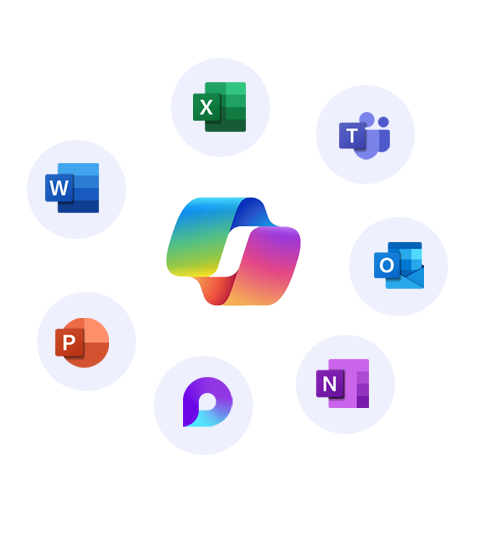Use of Microsoft 365 Copilot in Architecture
Architects and engineers are often assigned various responsibilities that require precision and high skill levels. While some tasks require a lot of time, Microsoft Copilot can assist in solving such problems. OpenAI’s extensive language model makes Microsoft Copilot a valuable tool for architectural and engineering professionals.
Here are some ways to integrate Microsoft Copilot into your architectural tasks:
Design Assistance
Microsoft Copilot can help architects speed up their design processes. The tool may produce building design proposals, which can then be used to create full design drawings. This comprises floor plans, elevations, sections, and three-dimensional models. For example, architects may utilize Microsoft Copilot to produce floor plans, elevations, and sections of a building much faster than manually.
If you are looking for references for a specific type of project or a specific type of material, you can ask Microsoft Copilot. Searching for ” Can you give me examples of tall buildings that use wood in their exterior facade?” can provide us with multiple design examples along with their references. Microsoft Copilot also provides a detailed answer, enabling you to understand the rationale and make improvements if necessary.
Cost Estimate
Microsoft Copilot may be beneficial for estimating schematic costs. For example, you may ask Microsoft Copilot, “How much does it cost to build a 5000-square-foot single-family home in Texas?” You may also request goods and labor in specified places. Permits and inspections can also be estimated using it.
While Microsoft Copilot only provides approximate estimates, they are typically sufficient to get you started. While this technology is unlikely to replace an expert estimator (at least for the time being) analyzing multiple websites and Googling results saves time and provides simple answers.
Rendering and Visualization
AI picture-generating technologies like Microsoft Copilot are proficient at creating visuals from natural language cues. For example, you may ask to create a series of photos showcasing various material options multiple times.
Alternatively, ask it to create various window designs along a brick wall i.e. Do you want to view some choices for certain construction geometry? It produces some intriguing results and creates quick results.
Code Compliance
Microsoft Copilot for 365 can offer accurate and extensive information on building codes by simply asking a few questions. For example, asking “What accessibility requirements apply to commercial buildings in Texas?” yields a list of accessibility elements. It is not an entire list, but it will encourage you to ask more specific questions, such as, “Do commercial buildings need accessibility signage in Texas?”. Microsoft Copilot makes it simpler and quicker for experts to discover the code flaws that must be resolved.
Energy Analysis
Microsoft 365 Copilot may be used to quickly generate prediction energy consumption models based on several design and operation scenarios. The text-based interface allows you to specify the location, insulation parameters, heating system, and desired interior temperature. Microsoft Copilot will provide energy use estimations. For rapidly testing situations, it is an effective tool due to its simplicity and speed.
Enhancing Creativity
Microsoft Copilot may also help architects become more creative. The tool may produce fresh and original design concepts, encouraging architects to think outside the box. Microsoft 365 Copilot, for example, may produce architectural design choices such as contemporary, classic, and minimalist.
Microsoft Copilot can also produce design ideas allowing you to experiment with alternative design styles and aesthetics. This may help architects create a broader portfolio of designs, enhancing their chances of attracting new customers.
Integrating Generative Tools
Architects may utilize Microsoft Copilot and other visual tools like MidJourney, Stable Diffusion, and Market to come up with fresh and innovative design ideas. Using Microsoft Copilot’s natural language processing capabilities, architects can readily grasp and interpret their client’s wants and expectations. Then, using visual tools like MidJourney, architects may construct interactive and immersive virtual reality settings to test and explore various design concepts in a realistic context.
On the other hand, tools such as Stable Diffusion may be used to construct and analyze complicated geometric shapes while the Market can create several diverse architectural designs in a time-efficient manner depending on their customers’ requirements. By combining Microsoft Copilot’s strong language processing with these visual tools, architects may develop various design ideas and thoroughly investigate them, resulting in more original and efficient designs.
Conclusion
One of the primary advantages of adopting Microsoft Copilot is the opportunity to save time while increasing productivity. The idea is to identify methods to use technology to your advantage. Not everything it suggests is entirely true or suitable for your circumstances. But it may provide you with a solid starting point.
Instead of spending hours looking for information or brainstorming new ideas, Microsoft Copilot can offer you the knowledge and ideas you need in seconds. Furthermore, Microsoft Copilot’s capacity to grasp natural language inputs eliminates the need to determine the best way to frame a query or assignment.
As a Microsoft Solutions Partner, Apps4Rent offers Copilot for Microsoft 365 licenses along with comprehensive technical support. This includes Copilot configuration and initial setup. We can also assist 24/7 with other Microsoft products to ensure seamless integration with the Copilot software and the most popular 365 applications.
Apps4Rent – Tier 1 Office 365 Cloud Solution Provider
Copilot integrates with all your favorite Microsoft apps

Get started with
Microsoft Copilot today!